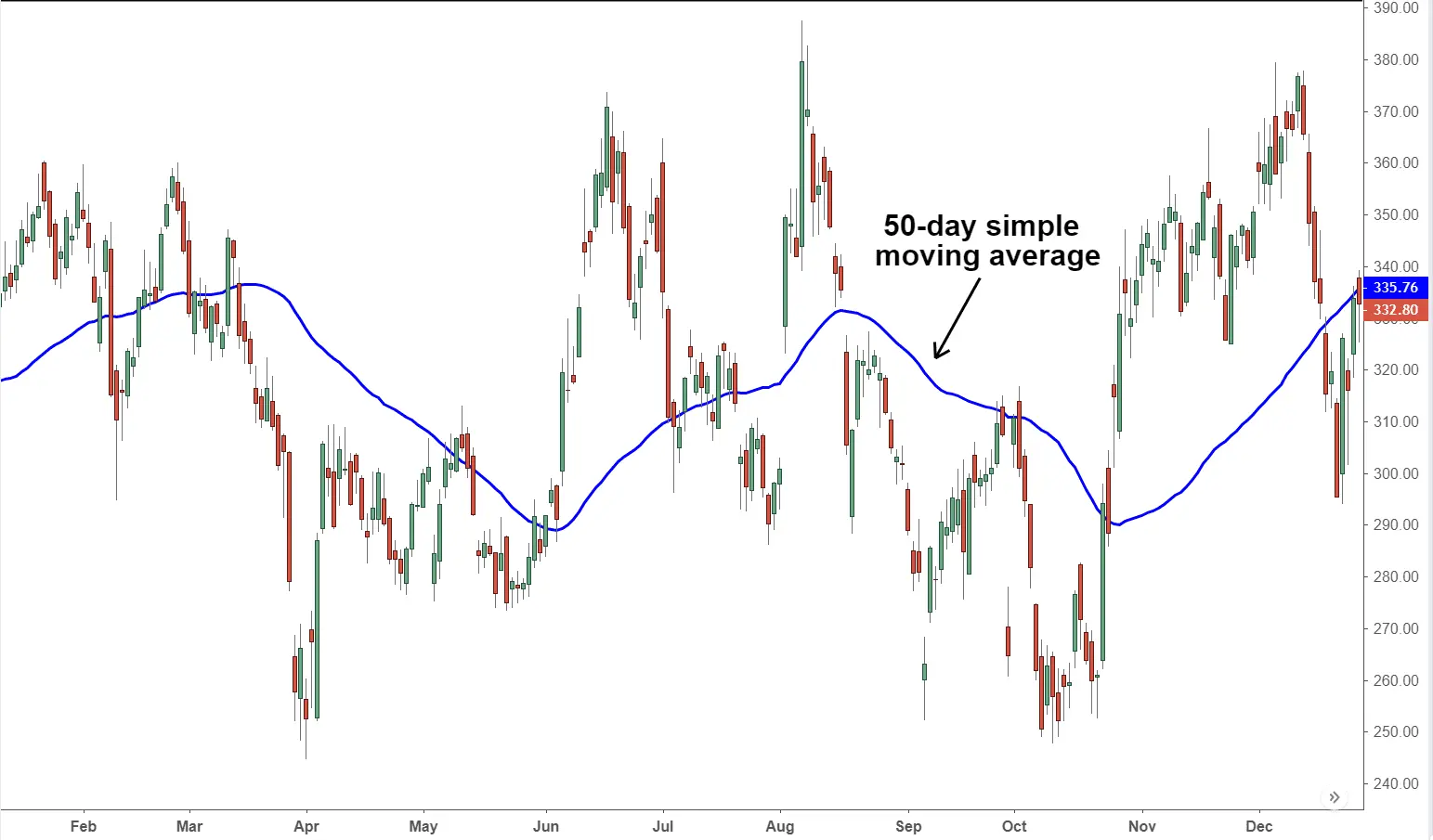How to Calculate Moving Average for NumPy Array in Python
-
Use the
numpy.convolveMethod to Calculate the Moving Average for NumPy Arrays -
Use the
scipy.convolveMethod to Calculate the Moving Average for NumPy Arrays -
Use the
bottleneckModule to Calculate the Moving Average -
Use the
pandasModule to Calculate the Moving Average

Moving average is frequently used in studying time-series data by calculating the mean of the data at specific intervals. It is used to smooth out some short-term fluctuations and study trends in the data. Simple Moving Averages are highly used while studying trends in stock prices.
Weighted moving average puts more emphasis on the recent data than the older data.
The graph below will give a better understanding of Moving Averages.

In this tutorial, we will discuss how to implement moving average for numpy arrays in Python.
Use the numpy.convolve Method to Calculate the Moving Average for NumPy Arrays
The convolve() function is used in signal processing and can return the linear convolution of two arrays. What is being done at each step is to take the inner product between the array of ones and the current window and take their sum.
The following code implements this in a user-defined function.
import numpy as np
def moving_average(x, w):
return np.convolve(x, np.ones(w), "valid") / w
data = np.array([10, 5, 8, 9, 15, 22, 26, 11, 15, 16, 18, 7])
print(moving_average(data, 4))
Output:
[ 8. 9.25 13.5 18. 18.5 18.5 17. 15. 14. ]
Use the scipy.convolve Method to Calculate the Moving Average for NumPy Arrays
We can also use the scipy.convolve() function in the same way. It is assumed to be a little faster. Another way of calculating the moving average using the numpy module is with the cumsum() function. It calculates the cumulative sum of the array. This is a very straightforward non-weighted method to calculate the Moving Average.
The following code returns the Moving Average using this function.
def moving_average(a, n):
ret = np.cumsum(a, dtype=float)
ret[n:] = ret[n:] - ret[:-n]
return ret[n - 1 :] / n
data = np.array([10, 5, 8, 9, 15, 22, 26, 11, 15, 16, 18, 7])
print(moving_average(data, 4))
Output:
[ 8. 9.25 13.5 18. 18.5 18.5 17. 15. 14. ]
Use the bottleneck Module to Calculate the Moving Average
The bottleneck module is a compilation of quick numpy methods. This module has the move_mean() function, which can return the Moving Average of some data.
For example,
import bottleneck as bn
import numpy as np
def rollavg_bottlneck(a, n):
return bn.move_mean(a, window=n, min_count=None)
data = np.array([10, 5, 8, 9, 15, 22, 26, 11, 15, 16, 18, 7])
print(rollavg_bottlneck(data, 4))
Output:
[ nan nan nan 8. 9.25 13.5 18. 18.5 18.5 17. 15. 14. ]
Since the time window interval is 4, there are three nan values at the start because the Moving Average could not be calculated for them.
Use the pandas Module to Calculate the Moving Average
Time series data is mostly associated with a pandas DataFrame. Therefore the library is well equipped for performing different computations on such data.
We can calculate the Moving Average of a time series data using the rolling() and mean() functions as shown below.
import pandas as pd
import numpy as np
data = np.array([10, 5, 8, 9, 15, 22, 26, 11, 15, 16, 18, 7])
d = pd.Series(data)
print(d.rolling(4).mean())
Output:
0 NaN
1 NaN
2 NaN
3 8.00
4 9.25
5 13.50
6 18.00
7 18.50
8 18.50
9 17.00
10 15.00
11 14.00
dtype: float64
We first convert the numpy array to a time-series object and then use the rolling() function to perform the calculation on the rolling window and calculate the Moving Average using the mean() function.
Here also since, the time window interval is 4, there are three nan values at the start because the moving average could not be calculated for them.
Manav is a IT Professional who has a lot of experience as a core developer in many live projects. He is an avid learner who enjoys learning new things and sharing his findings whenever possible.
LinkedIn